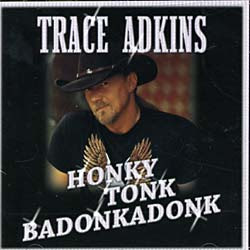
While idolized in music lyrics, fat tails are to be avoiding in trading systems and investment funds.
There is typically little crossover in the hip-hop and country music genres. Trace Adkins made the leap when he penned his chart topping song, “Honky Tonk Badonadonk” in 2005.
“We don’t care bout the drinkin’
Barely listen to the band
Our hands, they start a shakin’
When she gets the urge to dance
Drivin’ everybody crazy
You think you fell in love
Boys, you better keep your distance
You can look but you can’t touch
That honkey tonk badonkadonk”
According to Wikipedia, the term (which is slang that refers to a woman’s particularly large buttocks) had originated with rapper Keith Murray in 2001, then sent into the limelight with Missy Elliot’s hit “Work It” in 2002. It has gone on to be featured in such mainstream programs as Crank Yankers, Late Night With Conan O’Brien, and Subway commercials.
The term for “fat tails” in finance is kurtosis. Wikipedia describes as the “measure of the peakededness of the probability distribution”. The first and second moments of a statistical distribution, mean and variance (or standard deviation), are typically sufficient to describe the characteristics of a distribution – and consequently, the returns of a hedge fund or trading strategy. However, skew and kurtosis can add more color to the analysis, especially when the distribution is not normal.
Research performed over the past 50 years has shown that market price changes do not follow a normal distribution, and Maubossin provides a good overview of this property and its implications in “A Tail of Two Worlds“. Mark Shore’s paper, “Skewing Your Diversification“, also presents a wonderful review of asymmetrical asset class returns, as well as a thorough lesson on understanding and applying the higher statistical moments of a distribution such as skewness and kurtosis. Malkiel and Saha (Hedge Funds: Risk and Return) present an interesting discussion of hedge fund returns and their asymmetric characteristics. I have not read “The Black Swan” by Taleb, in which he examines the influence of highly improbable and unpredictable events that have massive impact, but it has received good reviews.
Higher kurtosis (fatter tails) means more of the variance is due to infrequent extreme deviations. A distribution with positive kurtosis is called leptokurtotic. In terms of shape, a leptokurtic distribution has a more acute “peak” around the mean (that is, a higher probability than a normally distributed variable of values near the mean) and “fat tails” (that is, a higher probability than a normally distributed variable of extreme values).
When selecting funds, or designing trading systems, effective risk management depends on differentiating between the different types of volatility, and the acceptable amount of ‘tail risk’. (Mark Shore describes volatility as being like cholesterol, it comes in good and bad variations. Upside volatility is not necessarily bad, but downside volatility is to be avoided).
A good example of a strategy with high kurtosis would be option selling funds. They consistently make high monthly returns until there is a price or volatility shock, and then can have extreme downside losses. I touched on the topic in an earlier post – “Are Option Selling Funds a Blowup Waiting to Happen?”. LTCM is really the poster child for tail risk.
In a recent post over on the excellent blog All About Alpha, there exists a good discussion of kurtosis. William Shadwick, founder of the London based quant group Omega Advisors, posts a primer on tail risk analysis. He introduces a new statistic titled the “C-S Character”, to correct for the shortcomings of the kurtosis measure, which he describes as wildly volatile. I have not delved into the details, but on first glance the post and paper are very intriguing.
Two new reads I have on the way look like “Market Wizards for Quants”. A third is a new book by Ralph Vince:
The Handbook of Portfolio Mathematics by Ralph Vince
How I Became A Quant bu Richard Lindsey
Derivatives Models on Models by Espen Haug

